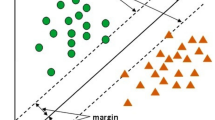Abstract
The hyperspectral image analysis improved by the most powerful and fastest growing technologies in the field of remote sensing in recent years. The hyperspectral image classification involves the identification and recognition by capturing spectral information over the region and consequently analysis by the pixel value. The conventional method uses the wiener filter for pre-processing and GLCM approach to extract the second order statistical features with dragonfly optimization technique for image extraction. The machine learning techniques used in the conventional technique is extreme learning machine and relevance vector machine. Here the high-resolution hyperspectral remote sensing datasets are taken from hyperspectral remote sensing scenes. This scene acquired by the AVIRIS sensor during a flight campaign over the Indian pines test site in Northwestern Indian. The hyperspectral images are filtered by a modified swarm optimization approach and these images are extracted by threshold-based segmentation process with the use of OTSU’s binary threshold method. The structured support vector machine is proposed for the classification of the satellite image. By the use of the optimization process, the structured support vector machine is improved its performance. Since overall sensitivity, specificity, and accuracy is improved. The simulation part carried out the data set for Indian pines and Salinas’s scene and the overall design is done with MATLAB.









Similar content being viewed by others
Explore related subjects
Discover the latest articles and news from researchers in related subjects, suggested using machine learning.Change history
26 May 2022
This article has been retracted. Please see the Retraction Notice for more detail: https://doi.org/10.1007/s12652-022-03966-y
References
Ahammad SH, Rajesh V, Rahman MZU (2019) Fast and accurate feature extraction-based segmentation framework for spinal cord injury severity classification. IEEE Access 7:46092–46103
Benediktsson JA, Palmason JA, Sveinsson JR (2005) Classification of hyperspectral data from urban areas based on extended morphological profiles. IEEE Trans Geosci Remote Sens 43(3):480–491
Braun AC, Weidner U, Hinz S (2012) Classification in high-dimensional feature spaces—assessment using SVM, IVM and RVM with focus on simulated EnMAP data. IEEE J Sel Top Appl Earth Obs Remote Sens 5(2):436–443
Chen X, Zhan S, Ji D et al (2018) Image denoising via deep network based on edge enhancement. J Ambient Intell Human Comput. https://doi.org/10.1007/s12652-018-1036-4
Damodaran BB, Nidamanuri RR, Tarabalka Y (2015) Dynamic ensemble selection approach for hyperspectral image classification with joint spectral and spatial information. IEEE J Sel Top Appl Earth Obs Remote Sens 8(6):2405–2417
Demir B, Erturk S (2007) Hyperspectral image classification using relevance vector machines. IEEE Geosci Remote Sens Lett 4(4):586–590
Echanobe J, del Campo I, Martínez V, Basterretxea K (2017) Genetic algorithm-based optimization of ELM for on-line hyperspectral image classification. In: IEEE international joint conference on neural networks (IJCNN). pp 4202–4207
Gao Q, Lim S, Jia X (2018) Hyperspectral image classification using convolutional neural networks and multiple feature learning. Remote Sens 10(2):1–18
Huo H, Guo J, Li ZL (2018) Hyperspectral image classification for land cover based on an improved interval type-II fuzzy C-means approach. Sensors 18(2):1–22
Kang X, Li S, Benediktsson JA (2017) Hyperspectral image classification: a benchmark. In: 2017 IEEE international geoscience and remote sensing symposium (IGARSS). IEEE, pp 3632–3639
Li X, Wang L (2015) On the study of fusion techniques for bad geological remote sensing image. J Ambient Intell Humaniz Comput 6(1):141–149
López-Fandiño J, Quesada-Barriuso P, Heras DB, Argüello F (2015) Efficient ELM-based techniques for the classification of hyperspectral remote sensing images on commodity GPUs. IEEE J Sel Top Appl Earth Obs Remote Sens 8(6):2884–2893
Lv Q, Niu X, Dou Y, Wang Y, Xu J, Zhou J (2016) Hyperspectral image classification via kernel extreme learning machine using local receptive fields. In: IEEE international conference on image processing (ICIP). pp 256–260
Manju S, Venkateswaran N (2017) An efficient feature extraction based segmentation and classification of antarctic peninsula ice shelf. Int J Control Theory Appl 10(20):231–241
Manju S, Venkateswaran N (2018) An Improved relevance vector machine with metaheuristic optimization based vegetation classification using worldview-2 satellite images. TAGA J Graph Technol 14:562–574
Mianji FA, Zhang Y (2011) Robust hyperspectral classification using relevance vector machine. IEEE Trans Geosci Remote Sens 49(6):2100–2112
Samat A, Du P, Liu S, Li J, Cheng L (2014) E2 LMs: ensemble extreme learning machines for hyperspectral image classification. IEEE J Sel Top Appl Earth Obs Remote Sens 7(4):1060–1069
Saravanakumar V, Suma KG, Sakthivel M, Kannan KS, Kavitha M (2018) Segmentation of hyperspectral satellite image based on classical clustering method. Int J Pure Appl Math 118(9):813–820
Shen Y, Xu J, Li H, Xiao L (2016) ELM-based spectral-spatial classification of hyperspectral images using bilateral filtering information on spectral band-subsets. IEEE international geoscience and remote sensing symposium (IGARSS). pp 497–500
Shen, Y, Chen, J, Xiao, L (2017) Supervised classification of hyperspectral images using local-receptive-fields-based kernel extreme learning machine. In: IEEE international conference on image processing (ICIP). pp 3120–3124
Shi J, Ku J (2017) Spectral-spatial classification of hyperspectral image using distributed extreme learning machine with MapReduce. In: IEEE international conference on big data analysis (ICBDA). pp 714–720
Sigirci IO, Bilgin G (2017) Hyperspectral image classification using fuzzy C-means based composite kernel approach. IEEE signal processing and communications applications conference (SIU). pp 1–4
Toksöz MA, Ulusoy I (2016) Hyperspectral image classification via basic thresholding classifier. IEEE Trans Geosci Remote Sens 54(7):4039–4051
Zhang X, Weng P, Feng J, Zhang E, Hou B (2013). Spatial-spectral classification based on group sparse coding for hyperspectral image. In: IEEE international geoscience and remote sensing symposium-IGARSS. pp 1745–1748
Author information
Authors and Affiliations
Corresponding author
Additional information
Publisher's Note
Springer Nature remains neutral with regard to jurisdictional claims in published maps and institutional affiliations.
This article has been retracted. Please see the retraction notice for more detail: https://doi.org/10.1007/s12652-022-03966-y"
About this article
Cite this article
Manju, S., Helenprabha, K. RETRACTED ARTICLE: A structured support vector machine for hyperspectral satellite image segmentation and classification based on modified swarm optimization approach. J Ambient Intell Human Comput 12, 3659–3668 (2021). https://doi.org/10.1007/s12652-019-01643-1
Received:
Accepted:
Published:
Issue Date:
DOI: https://doi.org/10.1007/s12652-019-01643-1




